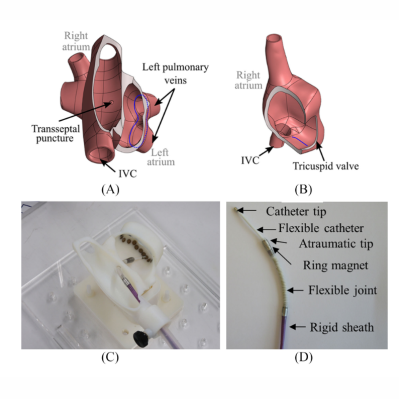Design and Evaluation of a Steerable Magnetic Sheath for Cardiac Ablations

News
- 2018.12.05: Our paper was awarded the Best Experimental Paper Award by the Society for Cardiac Robotic Navigation! More information here.
Abstract
Precise catheter control is crucial to the success of radiofrequency cardiac arrhythmia ablations. Remote control using external magnetic fields to directly steer the catheter tip is a promising strategy to accurately and easily perform cardiac catheter steering. Magnetic catheters must be flexible enough to be deflected by a magnetic field but rigid enough to provide sufficient force and stability during ablation. These conflicting requirements have limited the design options and effectiveness of magnetic catheters. Furthermore, the ablation force achievable by magnetic catheters depends strongly on the catheter’s bending angle; at angles greater than 90°, it can be very difficult to achieve any significant force during ablation. To overcome these shortcomings, we propose to magnetically control a flexible segment at the distal tip of the introducer sheath, rather than the catheter. Control of the tip orientation is thus decoupled from catheter insertion, enabling more robust and intuitive manipulability of the catheter. Usability testing with the Aeon Phocus, a magnetic navigation system, has shown that the control of this magnetic sheath is indeed more intuitive than the control of a standard magnetic catheter.
Bibtex
@article{Chautems2018,
author={C. {Chautems} and S. {Lyttle} and Q. {Boehler} and B. J. {Nelson}},
journal={IEEE Robotics and Automation Letters},
title={Design and Evaluation of a Steerable Magnetic Sheath for Cardiac Ablations},
year={2018},
volume={3},
number={3},
pages={2123-2128},
doi={10.1109/LRA.2018.2809546}}